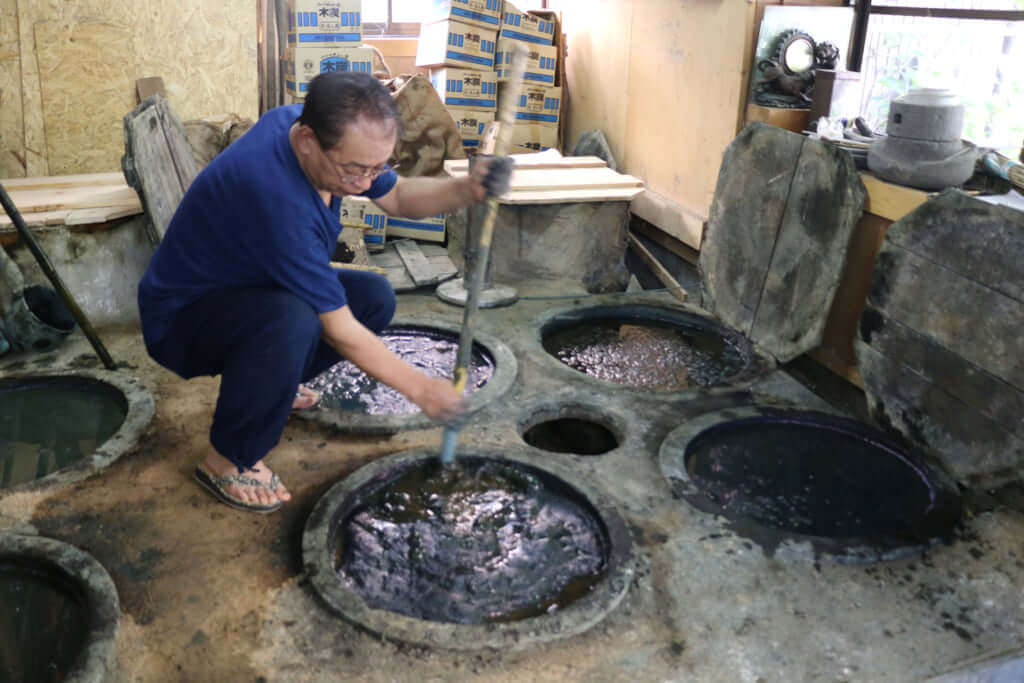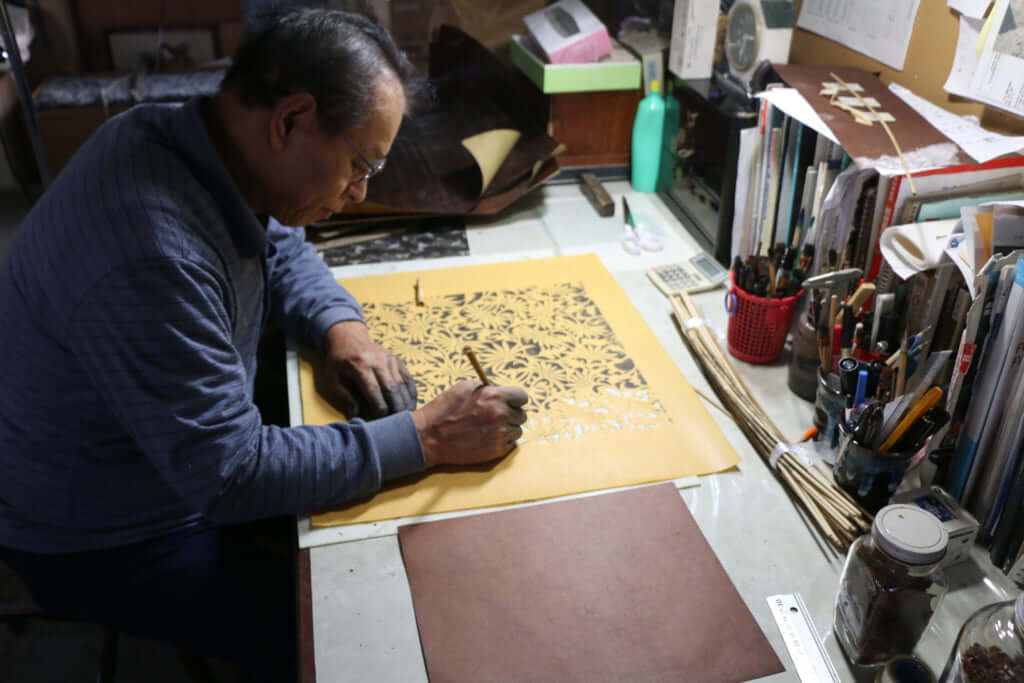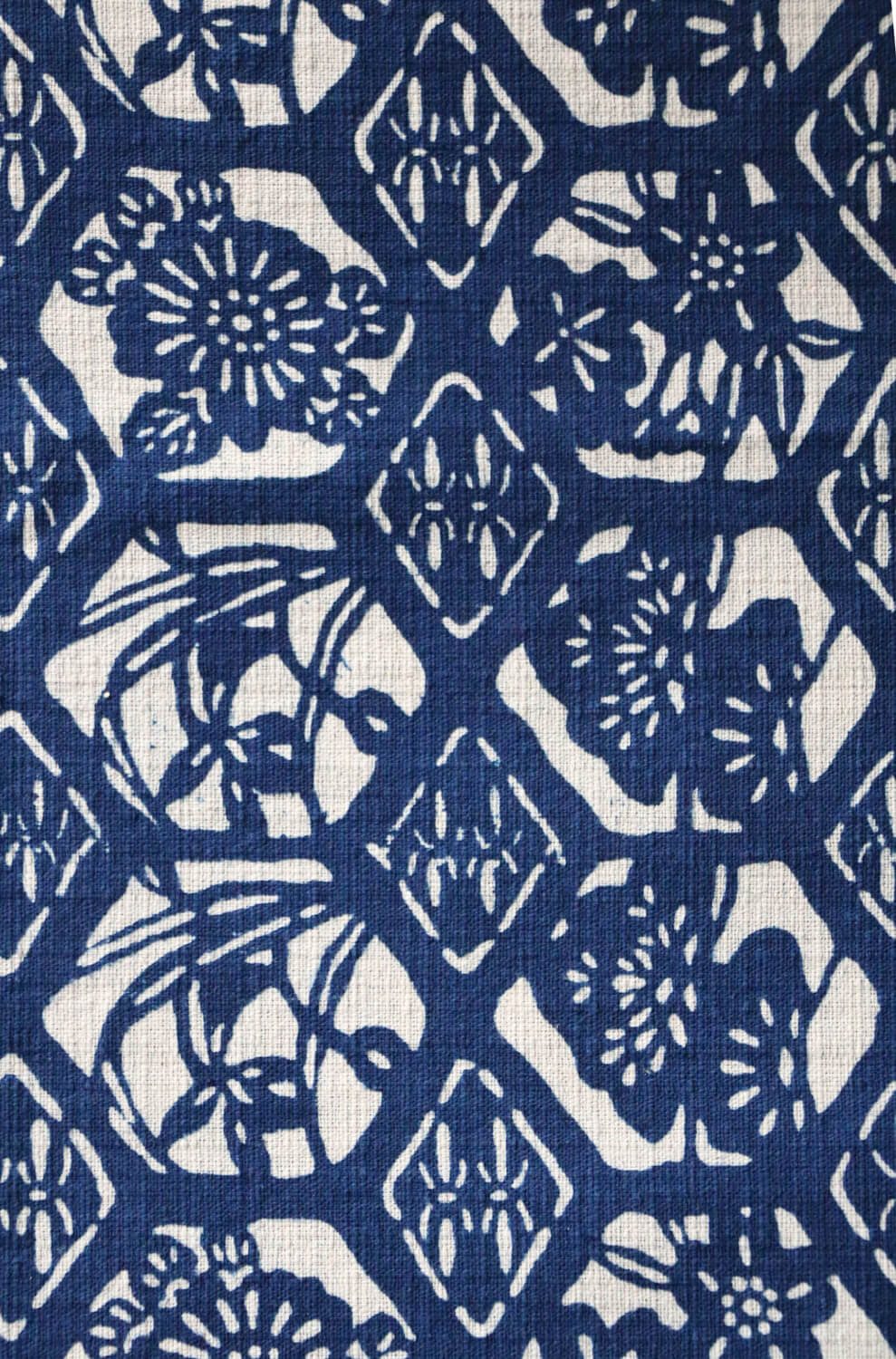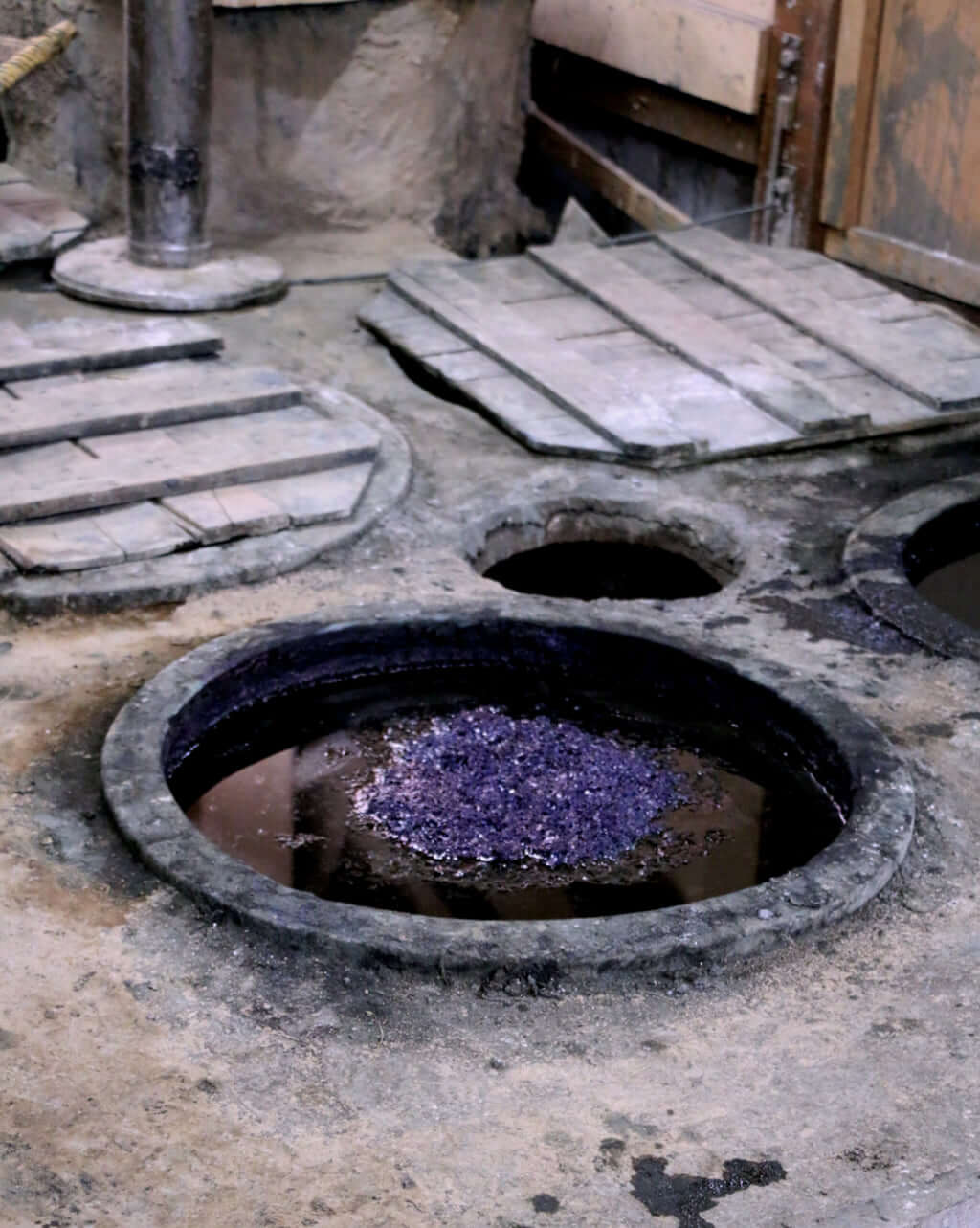Kanji Hama, The Last Katazome Artisan

©KANJI HAMA
Kanji Hama, 69, is one of the last, or maybe even the last Japanese creator of handmade indigo dye using the katazome technique, which was most popular during the Edo period. Hama takes several weeks to make the product, whereas with contemporary processes it can now be done in just an hour.
While millions of pairs of jeans are dyed annually by machines, Hama takes care of just a handful of items per year, notably kimonos that he colours from A to Z. He designs motifs himself, makes a paste, and begins the long process of stencilling his designs to the fabric, next soaking them in the indigo dye, revealing white motifs.
In an interview with the New York Times, Hama explains that it takes more than a dozen steps and multiple weeks, to complete each project. This long process is however far from a thankless task, he finds the essence and beauty of his work to be the artisanal practice of using his hands. Once a product is manufactured, it is no longer artisanal, he tells the newspaper.
Hama refuses to write down any guidelines to his practice, for him, his art goes beyond words and gestures. He is convinced that only those who practice the discipline daily with love and with rigour are able to master it. This savoir-faire was transmitted to Hama by his father and his father’s father. Maybe his son won’t follow in his footsteps, nothing is for sure, becoming an artisan is a lifestyle that requires a lot of work.

©KANJI HAMA

©KANJI HAMA

©KANJI HAMA

©KANJI HAMA
TRENDING
-
Yakumo Saryo: A Culinary Voyage in Tokyo
Shinichiro Ogata makes objects from glass, ceramics and bronze but is also a fantastic cook. Have a taste of both his talents at restaurant Yakumo Saryo.

-
WA BI GIN : (An Old) Affair of Passion
The Japanese distillery Hombo Shuzo, first known for their shoshu, decided to launch itself into artisanal production of gin. Thus, WA BI GIN was born.

-
Gome Pit, the Pop-Up Bar in a Waste Treatment Facility
Japan never ceases to surprise. Gome Pit is a pop-up bar with an unobstructed view over a pit where tonnes of waste are piled up before being incinerated.

-
A Japanese Tea Room Perched Atop a Rooftop
The building, in keeping with the minimalist style of its creator, offers a splendid view of Vancouver Bay and the surrounding mountains.

-
Discover Japanese Gastronomy Through The Solitary Gourmet Manga
This illustrated black and white album follows its lead through various bars, celebrating the Japanese art of living.





